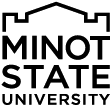Infectious Disease Policy
Minot State University will respond to an infectious disease outbreak utilizing a team of administrative personnel representing key departments to coordinate the University’s infectious disease response. Minot State University will follow Center for Disease Control, North Dakota Department of Health, and Local Public Health guidelines. Team members will transition to the National Incident Management System Command Post model if the infectious disease conditions deteriorate or another emergency develops affecting the University. Emergency response teams will follow Minot State Universities Emergency Operations Infectious Disease Response Plan (add Emergency Operations Plan Infectious Disease Response).
ADMINISTRATION
EMERGENCY OPERATIONS PLAN
Infectious Disease Response
Infectious Diseases Goals and Objectives
Infectious Diseases Goal #1 – Identify members of an Infectious Disease Response Team
Infectious Disease Goal #2 –Reduction of disease transmission
Objective #1 – Communicate relevant preventative measures and updated information to students and employees.
Infectious Disease Goal #3 – On-campus quarantine
CHECKLIST
REMEMBER: The procedures listed hereafter are a collection of best practices for an emergency. They are intended to be used as a guide, and the actions actually taken in any given situation may differ due to the random nature of any emergency. Use discretion when following these procedures.
1.Infectious Disease Response Team
The Minot State University Infectious Disease Response Team will be led by the Director of Student Health. Other representatives include the Vice President of Academic Affairs, Vice President of Administration and Finance, Vice President of Student Life, Director of University Communications, Director of Security, Residence Life Director, Director of Information Technology, Director of International Programs, Director of Facilities Management, and any other department representative deemed necessary by the Director of Student Health.
2.Reduction of Disease Transmission
Communication:
Accurate and timely communication is an important aspect in effectively managing an infectious disease outbreak. Primary methods of communication with students and employees include:
- Dedicated website with updated information including links to state and federal agencies with updated virus transmission information and reduction strategies.
- The Minot State University Campus Announcements publication will contain a direct internet link to the infectious disease webpage.
- Frequent communication regarding disease prevention strategies.
- Mass emails with specific information regarding University operations relating to the emergency to include work from home and the use of annual and/or sick leave.
- The Student Health Director will appoint a University representative to coordinate with state and local agencies and health care providers including the sharing of information relevant to the crisis.
- The Student Health Director will establish a system for collecting and reporting day-to-day information such as absenteeism or changes in Student Health Clinic traffic.
- The University Communications Director will be responsible for communicating relevant information in a manner that does not increase fear or create stigma.
The use of disinfectants on surface areas touched by people, including handrails, doorknobs, light switches, will be a high priority for custodial staff.
Disposable wipes will be provided to departments to allow employees to periodically disinfect office areas throughout the day.
Personal Activities
Employees and students should be reminded frequently to stay home if sick or if exposed to someone who may have the infectious disease.
Frequent washing of hands is extremely important in preventing spread of an infectious disease. The most effective method is to vigorously wash hands with soap and warm water for a minimum of 20 seconds often throughout the day. Hand sanitizers will be made readily available in public areas throughout the University. The sanitizers will contain at least 60% alcohol per Center for Disease Control guidelines.
Students and employees should always be reminded to cover coughs and sneezes appropriately. Cough or sneezes are indicative of an underlying health issue. Strong consideration should be given to going home or isolating as much as possible.
University Operations
The changing nature of an infectious disease outbreak may require changes to the operating schedule of the university. Social distancing refers to gathering in groups of no more than six to ten people and maintaining a six-foot distance from others.
Departments should prepare a schedule for limited staffing as needed. Department personnel should be cross trained in critical functions to effectively carry out assigned duties. Department operations are secondary to the health and wellness of the employee. Employees must be informed of their obligation to go or stay home if symptomatic to prevent or contain the disease.
Academic departments must be prepared to quickly transition to online classroom instruction. Proper IT support systems must always be available to assist faculty and students.
3. On-Campus Quarantine
A state fleet vehicle (van) should be reserved specifically for the transportation of students to community testing and/or to campus or University Heights for quarantine purposes. The vehicle will be disinfected by custodial personnel using an electrostatic sprayer.
5. Resumption of Normal Operations
The President will make the decision to resume to normal University operations. The Director of Communications will coordinate with the Vice President of Academic Affairs, Vice President of Administration and Finance, and the Vice President of Student Affairs in the preparation and dissemination of information regarding new operating procedures and the effective date of resumption of normal operations to students and employees.
6. After-Action Incident Review
The Student Health Director will organize an after-action meeting of the Infectious Disease Response Group after the disease outbreak has subsided. The purpose of the meeting is to provide a forum for discussion and review of the emergency to determine what procedures can be implemented if a disease outbreak occurs in the future. If necessary, the infectious disease policy will be updated.




